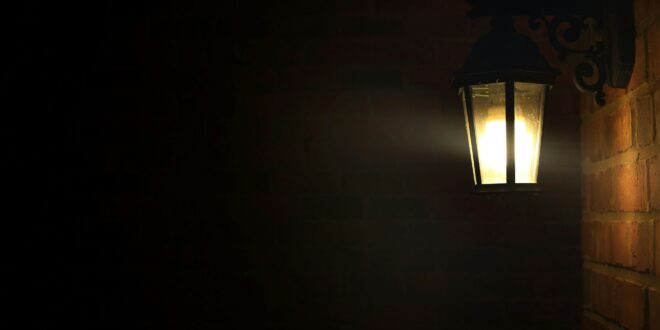Approximately 30% of people have some sort of vision impairment by the age of 65. In terms of personal safety, as well as security, this means the importance of adequate and appropriate lighting in and around our homes cannot be underestimated. With daylight hours on the decrease, now is the time to prioritise best lighting practices.
Love LEDs
LED (light emitting diode) lights are beneficial in more ways than one. They can enhance visibility while also reducing eye strain, but even more importantly, their bulbs are longer lasting. Climbing a ladder to change a light bulb is a fall risk. So is going without sufficient lighting until a friend or family member arrives to replace a bulb. The fewer times a bulb needs replacing, the better, and LEDs provide this advantage.
Glaringly obvious!
Because vision usually deteriorates with age, stronger lighting is often required. However, with stronger lighting comes the danger of glare and dazzle. Glare trouble-spots occur where light bounces off bright, shiny surfaces (such as high-gloss bench tops, glass tables, and mirrors). Where you have lights in positions that can create glare, shade them, or if safe to do so, use a lower watt bulb in them.
Highlight it!
A reduction in vision sensitivity means older people are less likely to be aware of contrasts in objects. Stair edges, curbs, lips on doorways, all become less noticeable. Trip hazards such as these can be made more obvious by outlining them with a contrasting colour. A strip of white paint on a dark surface is enough to make the difference.
Balancing act
Older eyes are less adaptable to changes in light levels. Instead of the traditional power-saving practise of using lower lighting in areas such as hallways, porches and garages, light these regions with bulbs which provide the same level of light as the areas leading off them.
Indoor motion sensor lights
It’s an inconvenience but it’s unavoidable – bathroom visits during the night increase with age. When you make a visit, in a semi-awake state, your risk for falling increases. Sensor lights (lights which automatically switch on when triggered by movement) are a low-key way of lighting your path to the bathroom without your having to fumble or search for a switch (a hazard in itself). Many motion sensor lights can be plugged in or can run on battery. Motion lights are also a safety courtesy if you have older friends staying over.
Free standing and bedside lighting
With ageing comes the need for ‘task lighting’ (lighting which helps us carry out activities such as close-work hobbies and reading). But the sort of free-standing lighting providing this also creates trip hazards in the form of cords. One alternative is to site hobby areas close to a wall where free-standing lighting cords can be secured off the floor. Another alternative is to have plug outlets fitted into the floor.
Outdoor lights
While outdoor lighting is essential for safety and security, the sort that comes on automatically when darkness falls, especially if it is not of a durable quality, can fail at the very time you need it most. It can be a more reliable alternative to have weather-resistant lights wired to the exterior of your home and out buildings, and switch them on when required. However, no light is one hundred percent dependable, and it is advisable to keep a small flashlight in your pocket, or carry a mobile phone with a torch application, when going outdoors at night.
Security lighting
Wired-in lighting that switches on when motion is sensed at a distance of up to several metres, provides a deterrent to unwanted visitors at night. However, when having security lights installed, give consideration to how they will impact neighbours (security lights often come on when trees or shrubs move in the wind).
Quality lighting is one of the most fundamental ways in which we can provide security in and around the home. It’s a worthwhile investment!









Cleone Blomfield - 1 month ago
I love my security light with video. If you live on your own and hear anything then I can just look at my phone and see if anyone is outside. I can activate the alarm or talk to them.